Parts
Types Of Bicycle Tire Valves Most Popular
Bicycles have evolved over the years, and so have their components. One such vital component, often overlooked but of utmost importance, is the tire valve. Understanding the types of bicycle tire valves most popular can ensure optimal tire performance, safety, and longevity. This article HookBike delves deep into the various bicycle tire valves and their significance.
Types Of Bicycle Tire Valves Most Popular
There are primarily three types of bicycle tire valves that are most popular and widely used around the world:
Presta Valves: The Racer’s Choice
The Presta valve, commonly found on high-end bicycles like road bikes, is characterized by its slender and tall design. It’s renowned for holding higher pressures, making it a favorite among professional cyclists and racers.
Key Features:
- Slim design prevents rim drilling.
- Equipped with a lock nut for secure sealing.
- Able to hold high air pressures efficiently.
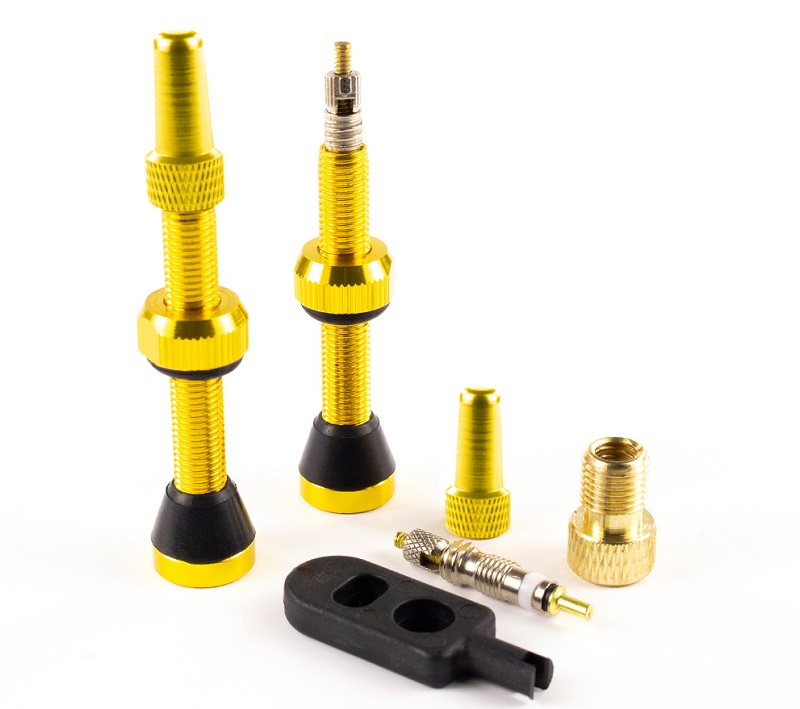
Schrader Valves: Versatility Defined
The Schrader valve is predominantly seen on a variety of bikes, including mountain bikes, kids’ bikes, and even cars. Its universal appeal can be attributed to its robust and user-friendly design.
Key Features:
- Wider and shorter than Presta valves.
- Equipped with a spring mechanism.
- Easily accessible for air filling at most stations.
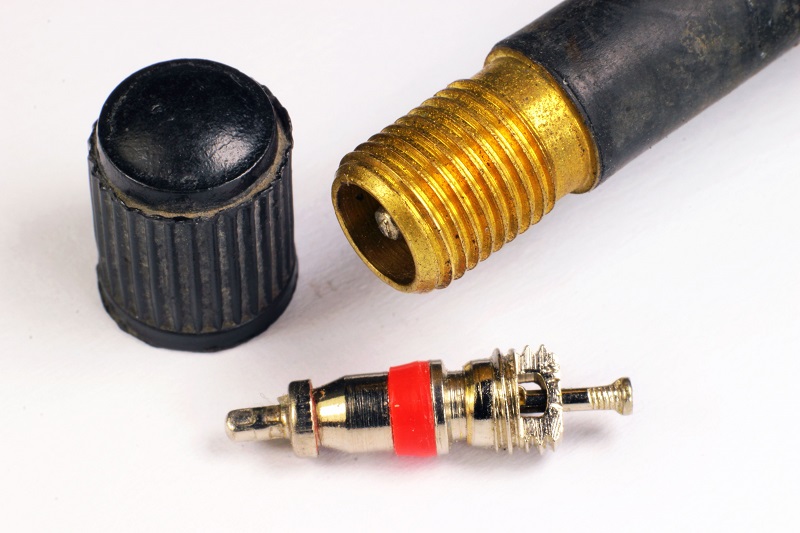
Dunlop Valves (or Woods Valves): The Classic
Popular in parts of Europe and Asia, the Dunlop valve is a mix between the Presta and Schrader. While not as widespread, it’s renowned for its reliability, especially on city bikes.
Key Features:
- Compatible with Presta and Schrader pump heads.
- Simple construction with fewer parts.
- Rubber tubing ensures an air-tight seal.
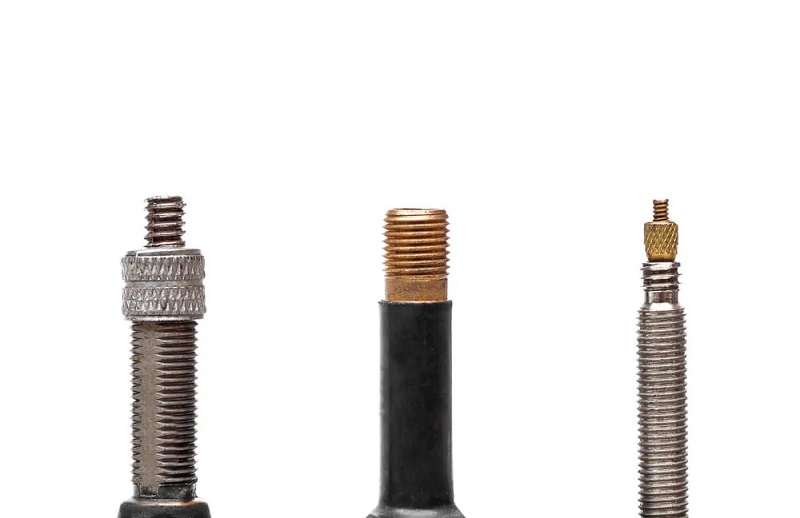
When choosing a bicycle pump, it’s essential to ensure it’s compatible with the valve type on your bicycle, or get one that has a dual-head design to accommodate both Schrader and Presta valves.
Factors Influencing Valve Choice
When selecting a valve, various factors come into play:
- Rim Design: The hole in the rim must accommodate the valve type. While Schrader requires a larger hole, Presta can fit into smaller ones.
- Tire Pressure: High-pressure road tires often benefit from Presta due to its ability to hold air efficiently.
- User Convenience: Schrader valves are more universally accepted at air pumps, making them user-friendly.
- Adaptors and Extensions: Enhancing Compatibility
For those who own multiple bikes or are unsure about pump compatibility, various adaptors and extensions are available:
- Presta to Schrader Adaptor: Allows a Presta-valved tire to be inflated using a Schrader pump.
- Valve Extensions: Useful for deep-rimmed wheels where the standard valve might be too short.
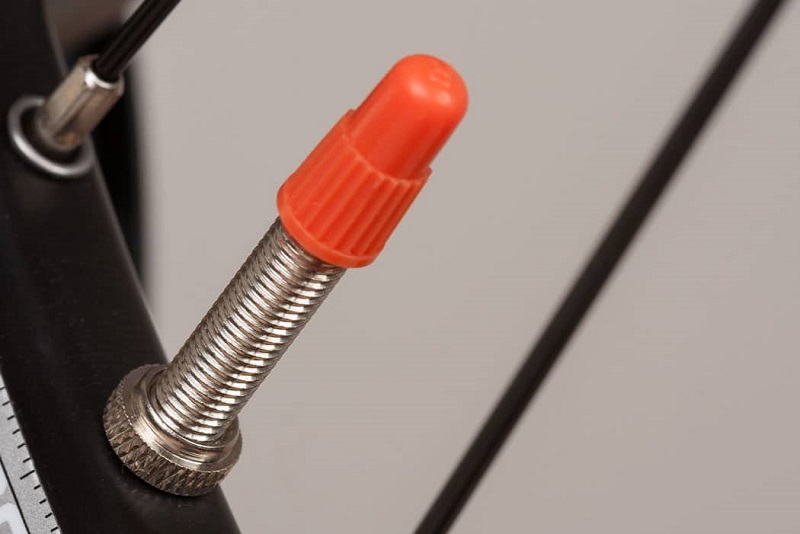
Can bicycle valves be replaced?
Yes, bicycle valves can be replaced, but the process and feasibility depend on the type of tube and valve in question.
Tubes with Replaceable Valve Cores
Presta: Many Presta valves have removable cores. These can be taken out and replaced using a specific tool called a valve core remover. This can be useful if the valve becomes damaged or if you want to add sealant to a tubeless setup without removing the tire.
Schrader: The core of a Schrader valve can also be removed and replaced using a valve core remover. This is common practice in automotive tires and can be applied to bicycle tires as well.
Tubes without Replaceable Valve Cores:
If the tube doesn’t have a replaceable valve core or if the base of the valve (where it’s bonded to the tube) is damaged, then you can’t just replace the valve. In this case, you would typically replace the entire inner tube.
Tubeless Tires
Tubeless setups, which don’t have inner tubes, use specific tubeless valves. If one of these valves fails or becomes damaged, you can replace just the valve without having to replace the whole tire. The process involves removing the tire from the rim, taking out the old valve, and installing a new one.
Conversion
If you’re thinking about converting from one valve type to another (e.g., from Schrader to Presta), know that the rim hole sizes for these two valve types are different. Schrader valves require a larger hole than Presta valves.
Some rims come with a hole size suitable for Schrader but can accept Presta if you use a grommet or adapter to reduce the hole size. However, if your rim has a hole size designed for Presta, you can’t fit a Schrader valve without enlarging the hole, which is generally not recommended as it can weaken the rim.
If you’re not experienced in repairing or maintaining bicycles, it’s always a good idea to consult with a local bike shop or a knowledgeable friend before attempting to replace valves or make other modifications to your bike.
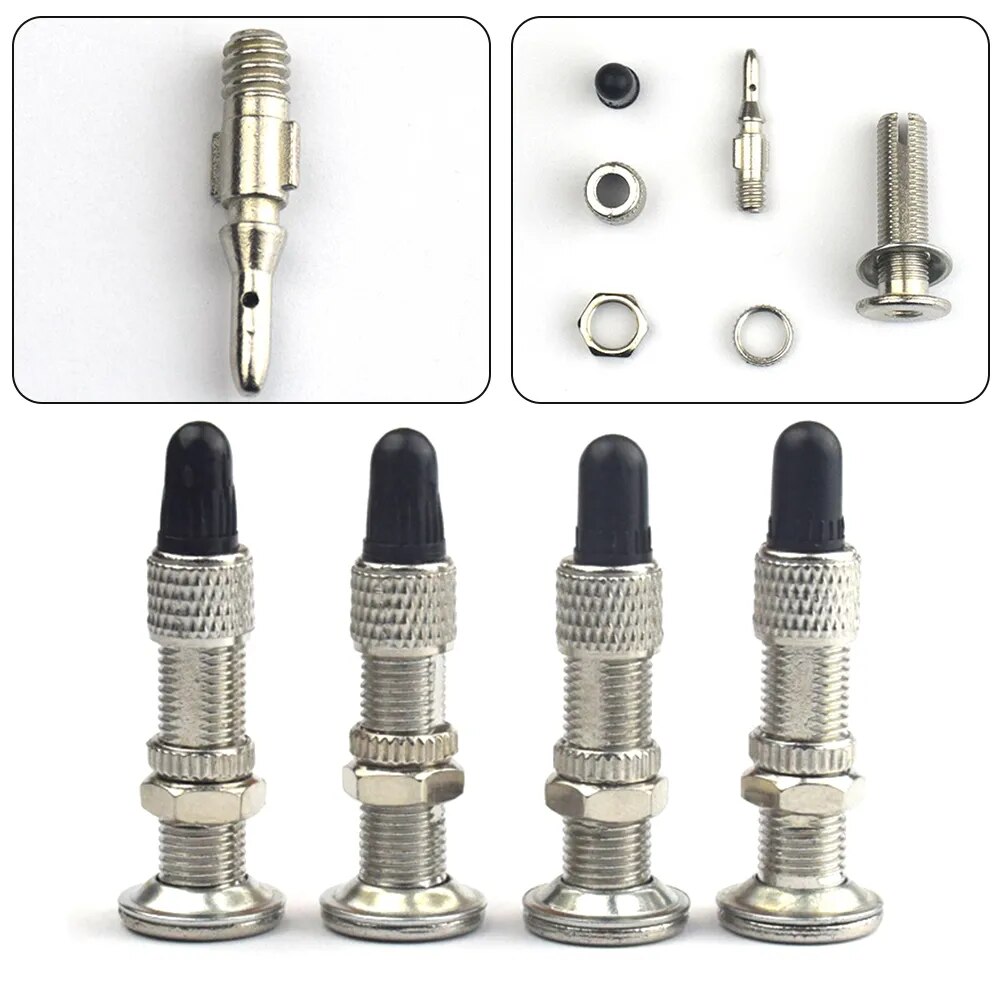
Maintenance and Care for Bicycle Tire Valves
Proper maintenance and care for bicycle tire valves can extend their lifespan and ensure that they function correctly. Here are some guidelines and tips for maintaining both Presta and Schrader valves:
Keep Them Clean
Dirt and debris can hinder a valve’s performance. Make sure to wipe off the valve before inflating. For Presta valves, unscrew the tip and press it down briefly to release a tiny bit of air, which can help clear out any dirt.
Regularly Check the Valve’s Integrity
Inspect for any visible damage, corrosion, or wear. For Presta valves, ensure the small lock nut at the tip isn’t rusted in place and can be easily opened and closed.
Use Valve Caps
Always use valve caps. They prevent dirt, water, and debris from entering the valve, especially when riding in muddy or wet conditions. For Presta valves, the cap also provides additional protection to the more delicate tip.
Check Tightness
For Presta valves, after inflating the tire, ensure the valve tip is screwed down tightly and then secured with the small nut at the base of the valve stem. For Schrader valves, make sure the valve core is secure (not overly tight) using a valve core tool.
Lubrication
Occasionally, and especially if a valve seems sticky or hard to operate, a tiny drop of lubricant can be applied. For Presta, you can apply it to the lock nut to ensure it doesn’t seize over time. Be cautious not to introduce lubricants into the inner portion of the valve where it can compromise the tube or tubeless sealant.
Be Gentle
When attaching and removing the pump head, be gentle to avoid bending or damaging the valve stem.
Use the Right Tools
If you need to remove or replace a valve core, use a proper valve core removal tool. These are inexpensive and specific to either Presta or Schrader valves.
Avoid Over-Tightening
If your Presta valve has a locknut at its base (to secure it to the rim), ensure it’s snug but not overly tight. Over-tightening can lead to damaged rims or valve stems.
Replace When Necessary
If a valve becomes damaged or consistently leaks air, it might be time to replace the entire tube (for inner tube setups) or the tubeless valve. If only the valve core is the issue, then just replace the core.
Store Spare Parts
It’s a good idea to keep spare valve cores and caps in your repair kit, especially if you’re going on long rides or bikepacking. They’re lightweight and can save you in a pinch.
With regular inspection and some basic care, you can ensure your bicycle tire valves remain in good working order and serve you well throughout many rides.
Conclusion: Making An Informed Decision
Understanding the types of bicycle tire valves most popular is crucial for every cyclist. Whether you’re a professional racer seeking optimal performance or a daily commuter looking for reliability, choosing the right valve can greatly influence your cycling experience. By being informed, you can make a decision that ensures safety, performance, and longevity for your bicycle tires.

